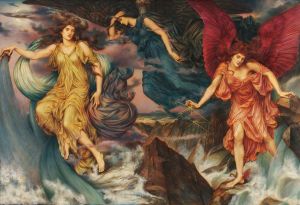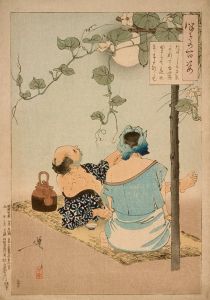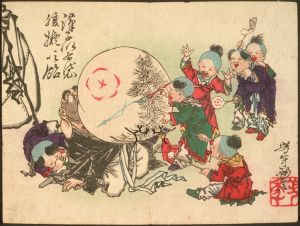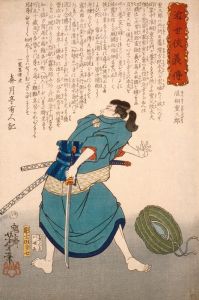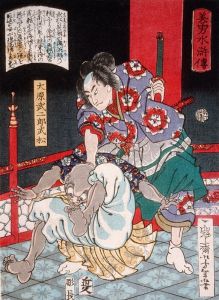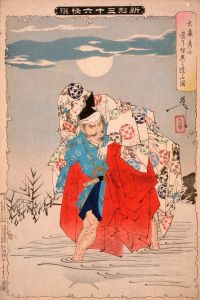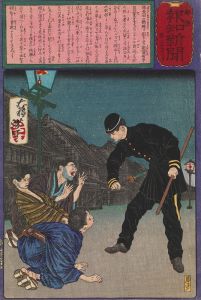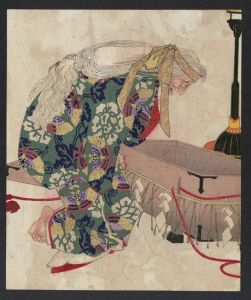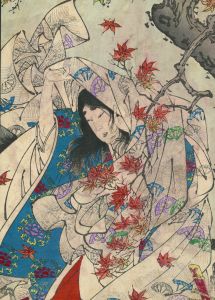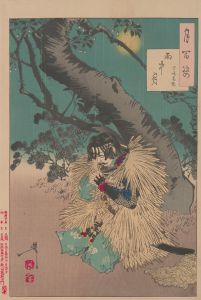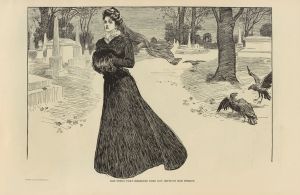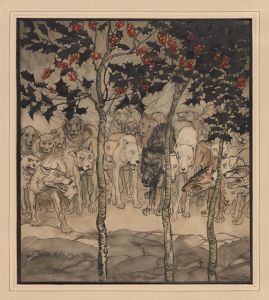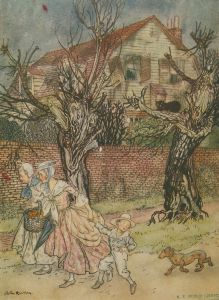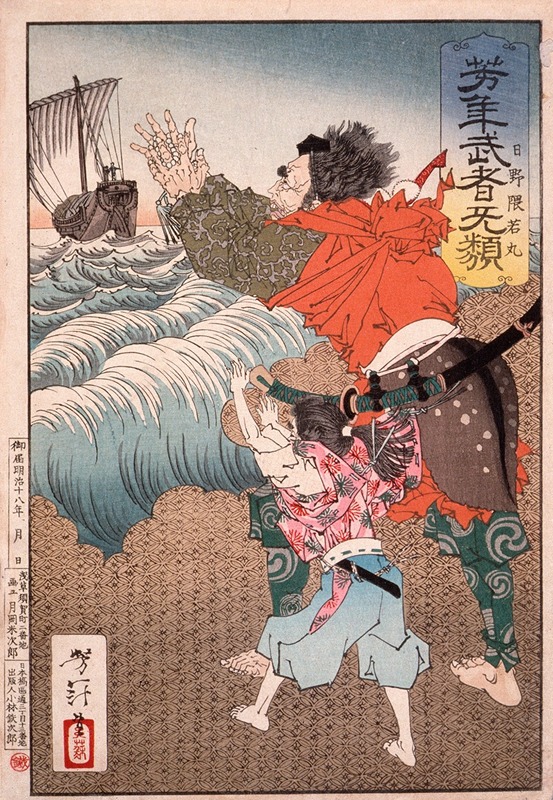
Hino Kumawakamaru and the Priest Calling Back the Boat
A hand-painted replica of Tsukioka Yoshitoshi’s masterpiece Hino Kumawakamaru and the Priest Calling Back the Boat, meticulously crafted by professional artists to capture the true essence of the original. Each piece is created with museum-quality canvas and rare mineral pigments, carefully painted by experienced artists with delicate brushstrokes and rich, layered colors to perfectly recreate the texture of the original artwork. Unlike machine-printed reproductions, this hand-painted version brings the painting to life, infused with the artist’s emotions and skill in every stroke. Whether for personal collection or home decoration, it instantly elevates the artistic atmosphere of any space.
Tsukioka Yoshitoshi (1839–1892) was a renowned Japanese artist known for his work in the ukiyo-e genre, which flourished during the Edo period and continued into the Meiji era. Yoshitoshi is celebrated for his innovative approach to traditional woodblock printing, often incorporating dramatic themes and a keen sense of storytelling in his art. One of his notable works is "Hino Kumawakamaru and the Priest Calling Back the Boat," which exemplifies his skill in capturing historical and legendary narratives.
This particular print is part of Yoshitoshi's series "New Forms of Thirty-Six Ghosts" (Shinkei Sanjūrokkaisen), which was published between 1889 and 1892. The series explores supernatural themes, drawing inspiration from folklore, legends, and historical events. Yoshitoshi's work often reflects a fascination with the macabre and the mysterious, and this series is no exception, showcasing his ability to blend realism with the fantastical.
"Hino Kumawakamaru and the Priest Calling Back the Boat" depicts a scene from the life of Hino Kumawakamaru, a legendary figure in Japanese history. Kumawakamaru was a young boy who became a monk and later a warrior. His story is intertwined with the historical events of the Nanboku-chō period, a time of political upheaval and conflict between the Northern and Southern Courts in Japan during the 14th century.
In the print, Yoshitoshi illustrates a dramatic moment where Kumawakamaru, having escaped from captivity, is seen on a boat. The priest, who is calling back the boat, is believed to be a representation of Kumawakamaru's spiritual guide or protector. This scene captures the tension and urgency of the escape, with the priest's gesture suggesting a supernatural or spiritual intervention.
Yoshitoshi's use of color and composition in this print is notable. The contrast between the dark, turbulent waters and the serene figure of the priest creates a dynamic visual tension. The intricate details of the characters' expressions and clothing reflect Yoshitoshi's mastery of the woodblock printing technique and his ability to convey emotion and narrative depth.
The "New Forms of Thirty-Six Ghosts" series, including this print, is significant for its reflection of the changing cultural landscape of Japan during the Meiji era. As Japan underwent rapid modernization and Westernization, Yoshitoshi's work served as a bridge between traditional Japanese art forms and contemporary themes. His prints often evoke a sense of nostalgia for the past while engaging with the present, making them enduringly popular and influential.
Tsukioka Yoshitoshi's legacy as an artist is marked by his innovative spirit and his contribution to the ukiyo-e tradition. "Hino Kumawakamaru and the Priest Calling Back the Boat" is a testament to his ability to capture the essence of Japanese folklore and history, presenting it in a way that resonates with audiences both in his time and today.





